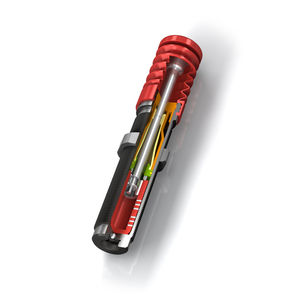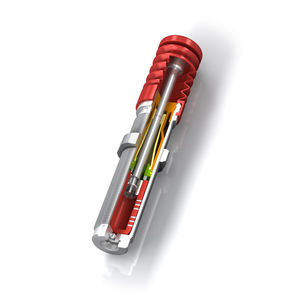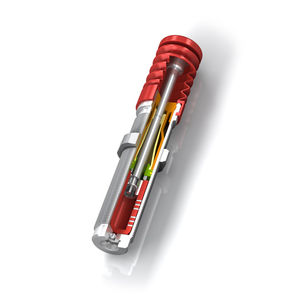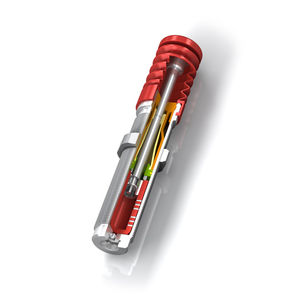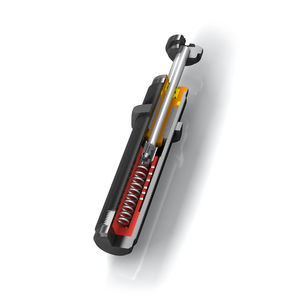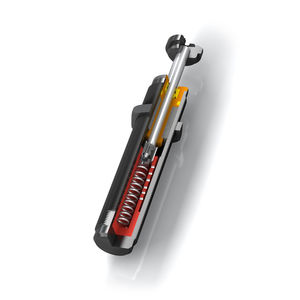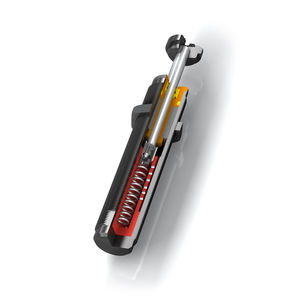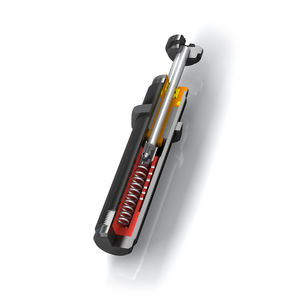
- Materials - Tools - Components
- Standard Mechanical Component
- Shock damper
- ACE Stoßdämpfer GmbH
- Company
- Products
- Catalogs
- News & Trends
- Exhibitions
Shock absorber SC25EUM-5rotarypneumaticfor machines


Add to favorites
Compare this product
Characteristics
- Function
- shock, rotary
- Technology
- pneumatic
- Applications
- for machines, oil, rod
- Material
- steel
- Other characteristics
- self-compensating, piston, miniature, high energy absorption, robust, corrosion-resistant
- Load capacity
10 N
- Stroke
8 mm
(0.31 in)
Description
Piston tube design for maximum energy absorption
Self-Compensating, Piston Tube Technology
Soft damping, but enormous capacity: The range of 'soft contact' absorbers SC²25 to SC²190 extends from thread size M10 to M14 and covers effective weight ranges of 1 kg to 1,550 kg. All models are characterised by high energy absorption and they also unite the piston tube technology with the diaphragm seal perfected by ACE. This enables direct installation as end position damping in pneumatic cylinders at 5 to 7 bar or applications where deceleration needs to take placed close to the pivot point.
They are maintenance-free, have an integrated positive stop and are mountable in any position. The option of a side load adapter allows impact angles of up to 25°.
Thanks to their robust design and their durability, these miniature shock absorbers can be used for a wide range of applications. Designers mainly use them for pick and place systems, pneumatic rotary modules and in automation applications.
Technical data
Impact velocity range 0.1 m/s to 5.7 m/s. Other speeds on request.
Operating temperature range 0 °C to 66 °C
Mounting in any position
Positive stop Integrated
Material Outer body, Accessories: steel corrosion-resistant coating; Piston rod: hardened stainless steel; Rolling diaphragm: SC²190: EPDM; Stretch diaphragm: SC²25 and SC²75: nitrile
Damping medium oil, temperature stable
Catalogs
No catalogs are available for this product.
See all of ACE Stoßdämpfer GmbH‘s catalogsRelated Searches
- Machine foot
- ACE anti-vibration mount
- ACE shock damper
- ACE hydraulic damper
- ACE mechanical damper
- ACE metal anti-vibration mount
- Metal foot
- Leveling foot
- ACE metal damper
- ACE industrial damper
- ACE rubber anti-vibration mount
- Elastomer foot
- ACE machine damper
- ACE plastic damper
- ACE vibration damper
- ACE gas spring
- ACE cylindrical anti-vibration mount
- ACE piston damper
- ACE adjustable damper
- ACE steel damper
*Prices are pre-tax. They exclude delivery charges and customs duties and do not include additional charges for installation or activation options. Prices are indicative only and may vary by country, with changes to the cost of raw materials and exchange rates.
















